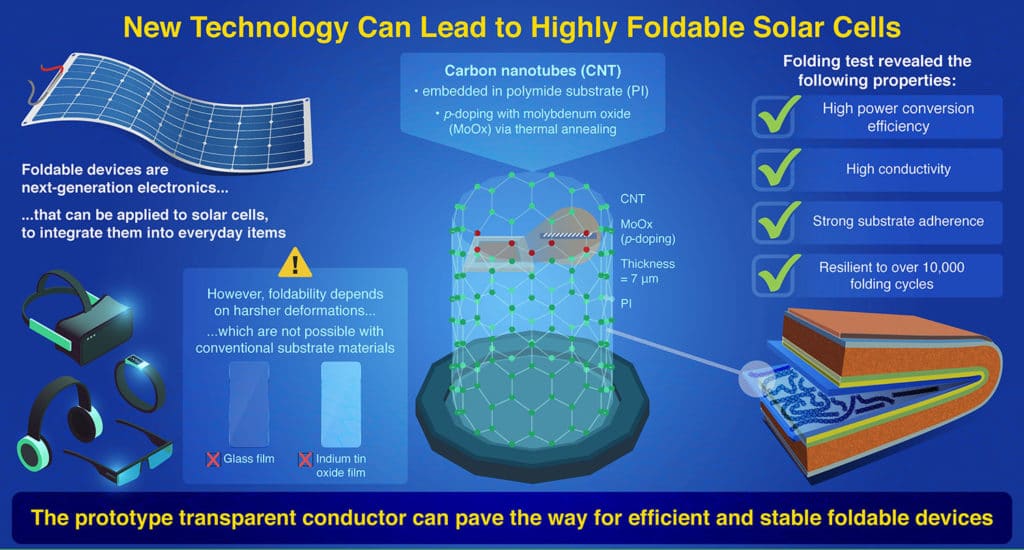Rigid, flat solar cells are great for rooftops and huge solar farms, but they are difficult to store in large numbers and integrate into everyday appliances, including phones, windows, vehicles, or indoor devices. To be integrated into these items, solar cells need to be foldable and repeatedly bend without breaking. Although many advances are being made in the design of flexible solar panels on a daily basis, the implementation of fully foldable panels has been a difficult task to date.
Now, engineers at Pusan National University in Korea have developed prototype solar cells that are fully foldable. This will help not only simplify the transportation of such panels but also facilitate their integration into devices such as cars, phones, and even clothing.
Professor Il Jeon of Pusan National University, Korea, elaborates, “Unlike merely flexible electronics, foldable devices are subject to much harsher deformations, with folding radii as small as 0.5 mm. This is not possible with conventional ultra-thin glass substrates and metal oxide transparent conductors, which can be made flexible but never fully foldable.”

Current flexible solar cells are usually made from thin-film materials such as graphene, tungsten diselenide, or copper indium gallium selenide (CIGS), deposited on flexible substrates such as polymers or even paper. The result is a solar cell that can be bent to some extent. But so far, they cannot fully fold in half without breaking.
To solve this problem, the engineers turned to single-walled carbon nanotube (SWNT) conductive films. They embedded this film onto a polyimide (PI) substrate and then doped it with molybdenum oxide to improve its conductivity.
As a result, the engineers were able to make a solar cell only 7 µm thick, with a folding radius of 0.5 mm. The resulting film was able to withstand more than 10,000 folding cycles without breakage. They also worked well as solar cells, with almost 80% transparency and a power conversion efficiency of 15.2%, the most ever achieved in solar cells using carbon nanotube conductors.
“The obtained results are some of the best among those reported thus far for flexible solar cells, both in terms of efficiency and mechanical stability,” Prof. Jeon pointed out.
